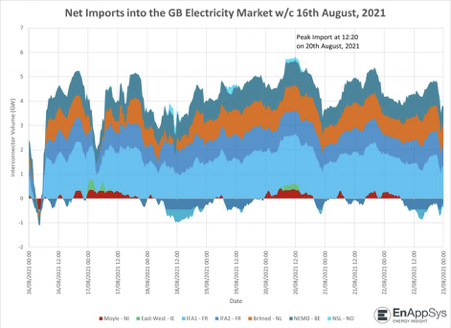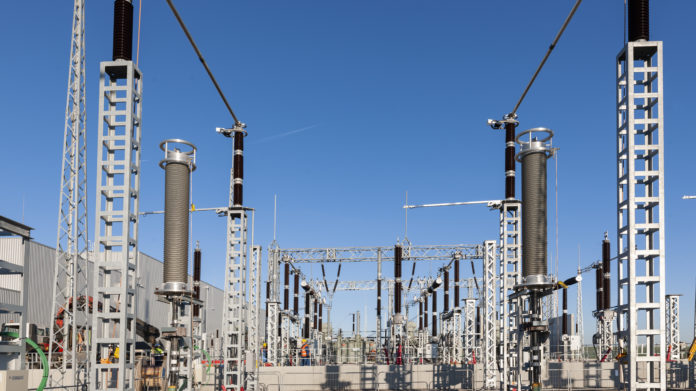Britain hit a new electricity import record late last month, according to analysts at EnAppSys. On Friday 20 August at 12:20 hours, net interconnector inbound flows peaked at 5,847MW, the consultancy has calculated.
On that day, Ireland was exporting to the UK, reverse of its own usual imports. A technical trial of the recently laid North Sea Link to Norway also contributed, coming in advance of its first commercial flows scheduled for 1 October.
Phil Hewitt, director of EnAppSys, foresees 20 August as heralding a future of increased activity on Britain’s interconnectors.
“We can expect records to be broken again when full load tests take place in September,” Hewitt said.
Eleclink, a new 4GW HVDC interconnector running through the Channel Tunnel, will add to UK connectivity with our neighbours. It wasn’t scheduled to go live until 2022, but fewer trains using the tunnels due to Covid-19 have enabled speedier installation.
By this Christmas, Britain is expected to enjoy a total 8.4GW of installed international transmission capacity. In worst case scenarios, that extent means the nation could in theory source as much as a quarter of its power from neighbours.

Imports from the European mainland are cheaper than home-produced power, thanks to the Carbon Price Support, a top-up to the UK’s carbon price. Three months ago EnAppSys released analysis demonstrating that in consequence the cost of interconnector capacity to Britain is the most expensive in Europe.
Two new links scheduled for lighting before 2024, connecting Britain with Germany and Denmark, will add a further 2.8GW. Home carbon taxes notwithstanding, such new capacity in international cables looks set to reverse Britain’s historic dependence on sucking in power.
Hewitt said, “In the long run, Britain will stop being a net importer of electricity as more offshore wind is built around its shores.
“During periods when GB has more low-carbon generation than it needs, it may decide to dump excess power into Europe. This could become an important factor in reversing the interconnectors and changing GB into a net exporter of power, perhaps as soon as 2025.”
Britain was Europe’s second biggest net importer in the first half of 2021, with EnAppSys recording 12.3TWh.




